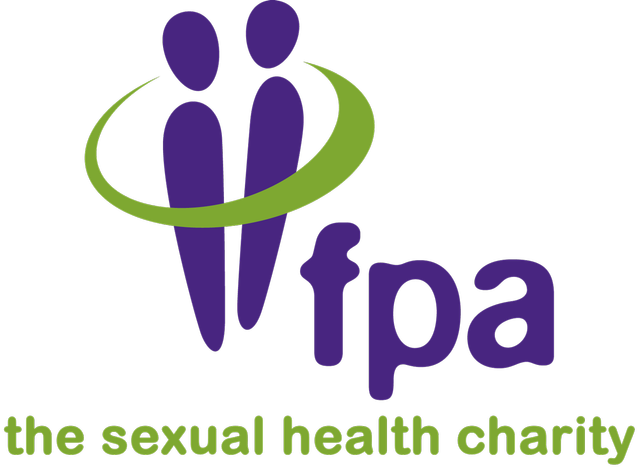
How quickly do different STIs spread?
Peer reviewed by Dr Sarah Jarvis MBE, FRCGPLast updated by Dr Laurence KnottLast updated 7 Nov 2017
Meets Patient’s editorial guidelines
- DownloadDownload
- Share
- Language
- Discussion
In Victorian times, sex was only acceptable within the confines of a marriage. Today, thankfully, things are different and people may be involved with several partners. But unfortunately, sexual freedom comes with a price tag in the form of exposure to sexually transmitted infections (STIs). There are many myths surrounding STIs and it's important to know the facts - particularly when it comes to symptoms and how quickly they show up after exposure.
Sponsored
FPA
Supported by sexual health charity FPA, a champion of people’s right to sexual and reproductive health and wellbeing.

In this article:
Continue reading below
How soon do STI symptoms show up?
If you've had sex with a new partner, you may become aware of every little ache down below or spot on your skin, and worry that it could be a symptom of an STI.
Many STIs won't give you any symptoms at all, but if they do it's good to know how soon after sex they develop. The period of time between getting infected and developing symptoms is known as the incubation period. Here you will find information about the incubation period of the most common types of STIs.
Chlamydia
You may not notice any symptoms from chlamydia in the short term. Some people get a discharge from the vagina or penis one to three weeks after exposure. But sometimes symptoms develop months or years after the original infection.
Gonorrhoea
Gonorrhoea is another infection which often doesn't cause short-term symptoms. However, you can still pass it on. Vaginal discharge or discharge from the penis can develop any time from a few days to a month after exposure.
Genital herpes
Genital herpes is another infection that can lie dormant without causing any symptoms. When symptoms do occur they can vary from mild soreness to lots of painful ulcers around the vulva or penis. This happens a couple of weeks after the original infection. The symptoms settle down but often come back from time to time.
HIV and AIDS
You may not know you have acquired HIV for many months or years or even at all. Some people get a flu-like illness with a fever a couple of weeks after exposure but assume it's just a common infection. Symptoms may include sore throat, blotchy red rash and swollen glands. Years later you may start to notice flu-like symptoms again, with sweating, loss of weight, tiredness and diarrhoea. AIDS may eventually develop. This can be associated with many different conditions, including unusual infections, skin cancer and brain disorders such as dementia.
Scabies
Scabies causes intense itching on the skin. If you've never had it before, it takes about one or two months for symptoms to appear. If you've had a previous infection, the itching can start after a couple of days.
Genital warts
Not everyone who acquires the virus gets genital warts, but if they are going to develop they usually do so within three months of exposure.
Hepatitis B
Symptoms of an acute hepatitis B infection show up about 4-6 weeks after exposure. They include loss of appetite, sickness, feeling unwell, fever and jaundice. In many people, the hepatitis virus is completely killed off by their immune system, but sometimes it stays in the body for life. Even then, many people remain completely well. But a few go on to develop symptoms of liver disease.
Hepatitis C
Hepatitis C is mainly picked up without having sex (for example, when sharing needles when injecting street drugs). Hepatitis C behaves very similarly to hepatitis B once in the body. Some people eventually become virus-free but in others the virus hangs around. A proportion of people develop symptoms of long-term liver disease. The average time from exposure to symptoms is about 2-6 weeks, but longer periods have been reported.
Pubic lice
Public lice are tiny insects which lay their eggs along hair shafts. The infestation is passed by intimate skin-to-skin contact, usually during sex. The first thing you notice is probably intense itching in the pubic area, followed by the appearance of red spots. It takes a minimum of five days for the itching to develop but sometimes it can be several weeks before symptoms appear.
Does one STI increase the risk of getting others?
Strictly speaking, the only STI which increases the risk of getting others is HIV. This is because HIV can affect the body's ability to fight infection through the development of AIDS. AIDS affects the immune system and reduces the body's defence against a variety of infections, including those which are sexually transmitted.
Also, risky sexual behaviour such as frequently changing partners or having sex without a condom, can expose you to several different STIs. So people who require testing are usually screened for several different STIs, in case they have picked up more than one.
Continue reading below
Getting tested
Don't wait for symptoms to start. You can harbour an STI such as gonorrhoea, herpes, chlamydia or HIV without having symptoms. Although protection (such as using condoms or other barrier methods) can lower the risk of acquiring an STI, it can't completely prevent it. So if you may have exposed yourself to an STI, get tested at your local sexual health clinic.
Patient picks for Sexually transmitted infections

Sexual health
Why regular STI checks are so important
Conversations about sex are more open than ever, with a new sexual health and relationships curriculum to be made compulsory across English schools in 2020. Despite this, sexually transmitted infections (STIs) are on the increase. We ask the experts why it's so important to get checked regularly and how to tackle your fear of the result - whatever your age, gender or sexuality.
by Georgia Gallant

Sexual health
Video: What are the different types of STI?
Whether you've just been diagnosed with a sexually transmitted infection or suspect you have one, it's useful to know exactly what each one is, as well as the possible causes and treatments. Our experts look at some of the main questions surrounding various STIs.
by Dr Rosemary Leonard MBE, MRCGP
Continue reading below
Article history
The information on this page is peer reviewed by qualified clinicians.
7 Nov 2017 | Latest version

Ask, share, connect.
Browse discussions, ask questions, and share experiences across hundreds of health topics.

Feeling unwell?
Assess your symptoms online for free
Sign up to the Patient newsletter
Your weekly dose of clear, trustworthy health advice - written to help you feel informed, confident and in control.
By subscribing you accept our Privacy Policy. You can unsubscribe at any time. We never sell your data.